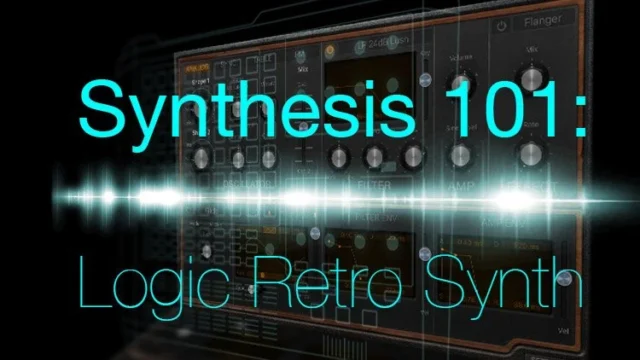Synthesis 101 Logic Retro Synth TUTORIAL
This course is targeted at beginners and intermediate level students.
It covers the fundamentals of audio synthesis.
The software being used is Logic Pro X’s Retro Synth, but the underlying concepts are transferable to the majority of other software and hardware synthesizers on the market.
The course is structured progressively, covering all the building blocks and different methods of synthesis commonly used.
Throughout the course there are animations demonstrating the concepts visually, so you can see as well hear the sound.
There are also example patches available to download that cover common types of sounds such as:
- basses
- leads
- pads
This course is designed to be an in depth, comprehensive look at synthesis and on completion you will have all the basic knowledge required to kick start your own sound design journey.
Project 1: Create a Bass Patch
Based on what you have learned in Subtractive Synthesis videos create a bass patch.
Your bass patch should contain the following parameters:
- A low octave tuning of the oscillators
- Some use of low pass filtering
- Some modulation of the filter’s cut off frequency
Project 2: Create a Lead Patch
Based on what you have learned in Subtractive Synthesis videos create a lead patch.
Your lead patch should contain the following parameters:
- A fast attack and release for the amplitude envelope
- A high sustain for the amplitude envelope
- Some harmonic modulation (e.g. an envelope modulating the oscillator’s sync amount)
Project 3: Create a Pad Patch
Based on what you have learned in FM Synthesis videos create a pad patch.
Your pad patch should contain the following parameters:
- A slow attack and release for the amplitude envelope
- Some modulation of the harmonic content (e.g. an LFO modulating the FM amount)
Project 4: Create a Lead Patch
Based on what you have learned in FM Synthesis videos create a lead patch.
Your lead patch should contain the following parameters:
- A fast attack and release for the amplitude envelope
- A high sustain for the amplitude envelope
- Some harmonic modulation (e.g. an envelope modulating the FM amount)

